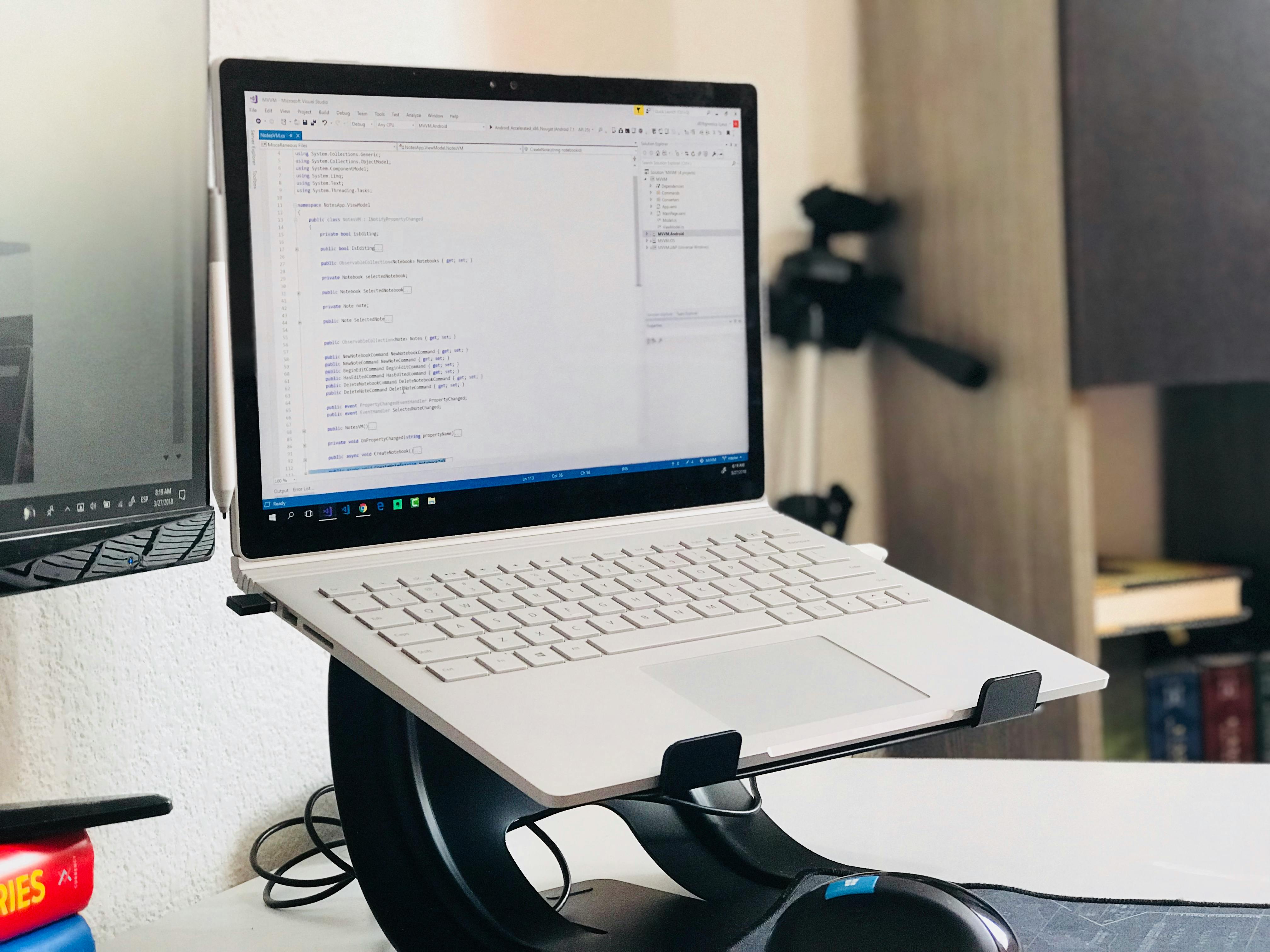Why do you need a laptop stand?
Laptops are not ergonomically ideal by default. Their low screen positioning often causes users to:
- Flexing the neck forward (exceeding 20 degrees) increases the load on the cervical spine. For reference, a 15-degree forward tilt can double the strain on the neck compared to a neutral position.
- Rounding the shoulders and hunching the back strain the muscles that support the spine and cause stiffness in the thoracic region.
- Overuse of smaller postural muscles contributes to fatigue and discomfort in the neck and upper back.
A laptop stand mitigates these issues by elevating the screen to eye level or slightly below, which:
- Reduces neck bending and keeps the cervical spine in a neutral position.
- Promotes an upright posture.
- Minimises strain on neck and shoulder muscles.
Adjusting your laptop stand
- Adjust the stand height
Position the laptop so the top of the screen is at or slightly below eye level. This prevents neck strain by keeping your head in a neutral position. If your stand is adjustable, take the time to find the height that feels most natural and comfortable.
- Use an external keyboard and mouse
Pair your laptop stand with an external keyboard and mouse to keep your arms and wrists in a relaxed, natural position. This prevents you from reaching awkwardly up to the laptop keyboard, reducing strain on your hands and forearms.
- Maintain good posture
Even with the best setup, your posture matters. Sit with your feet flat on the floor, your back straight, and your shoulders relaxed. Your hips should be slightly higher than your knees for optimal comfort.
- Take regular breaks
A laptop stand helps your posture, but movement is just as important. Take breaks every 30 minutes to stand, stretch, and reset your body. Simple stretches can do wonders for relieving tension and keeping you energised.
Using a laptop stand with the correct setup minimises these risks by promoting a neutral alignment of your head, neck, and spine. This minor adjustment can make a significant difference in reducing discomfort and improving your musculoskeletal health.



